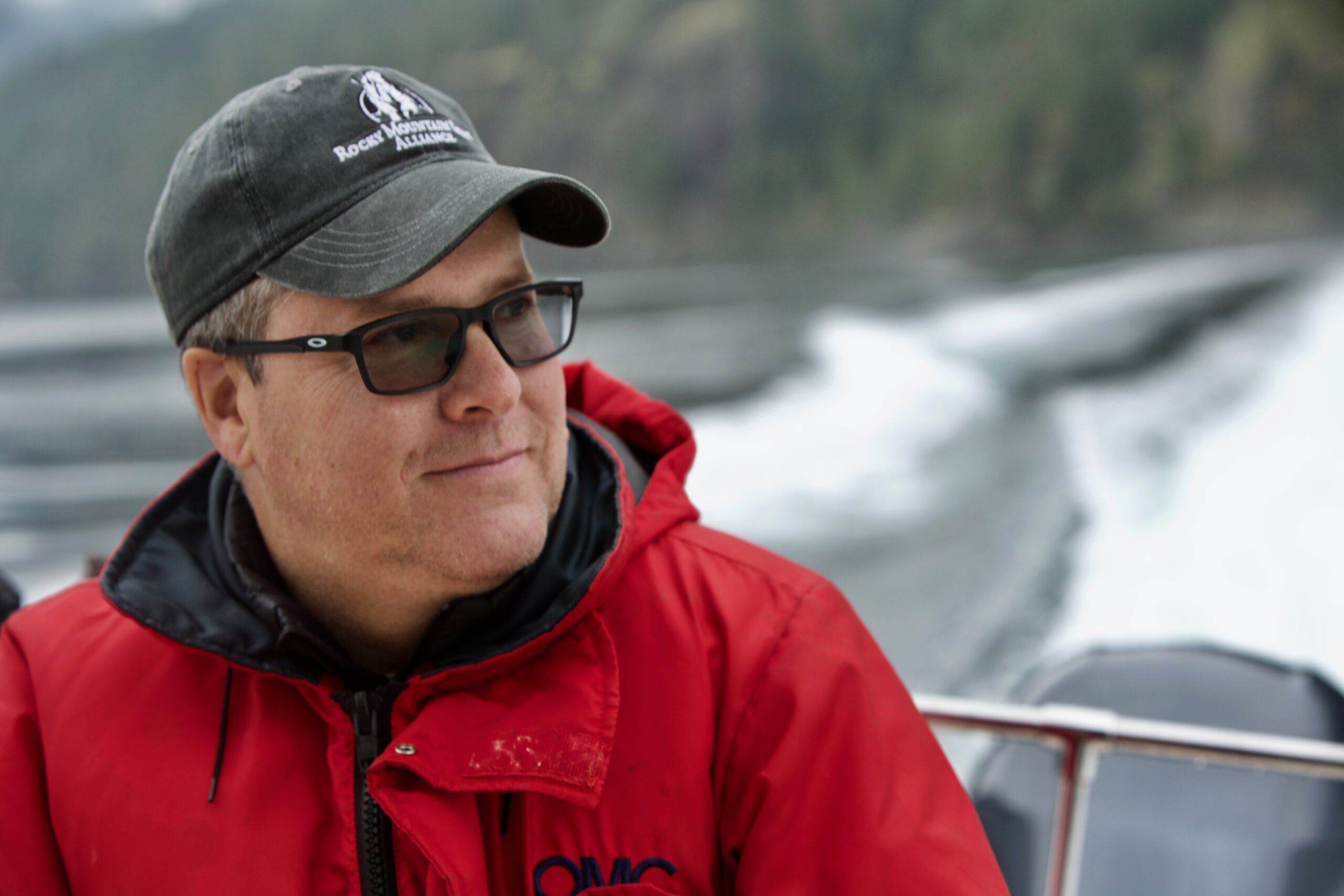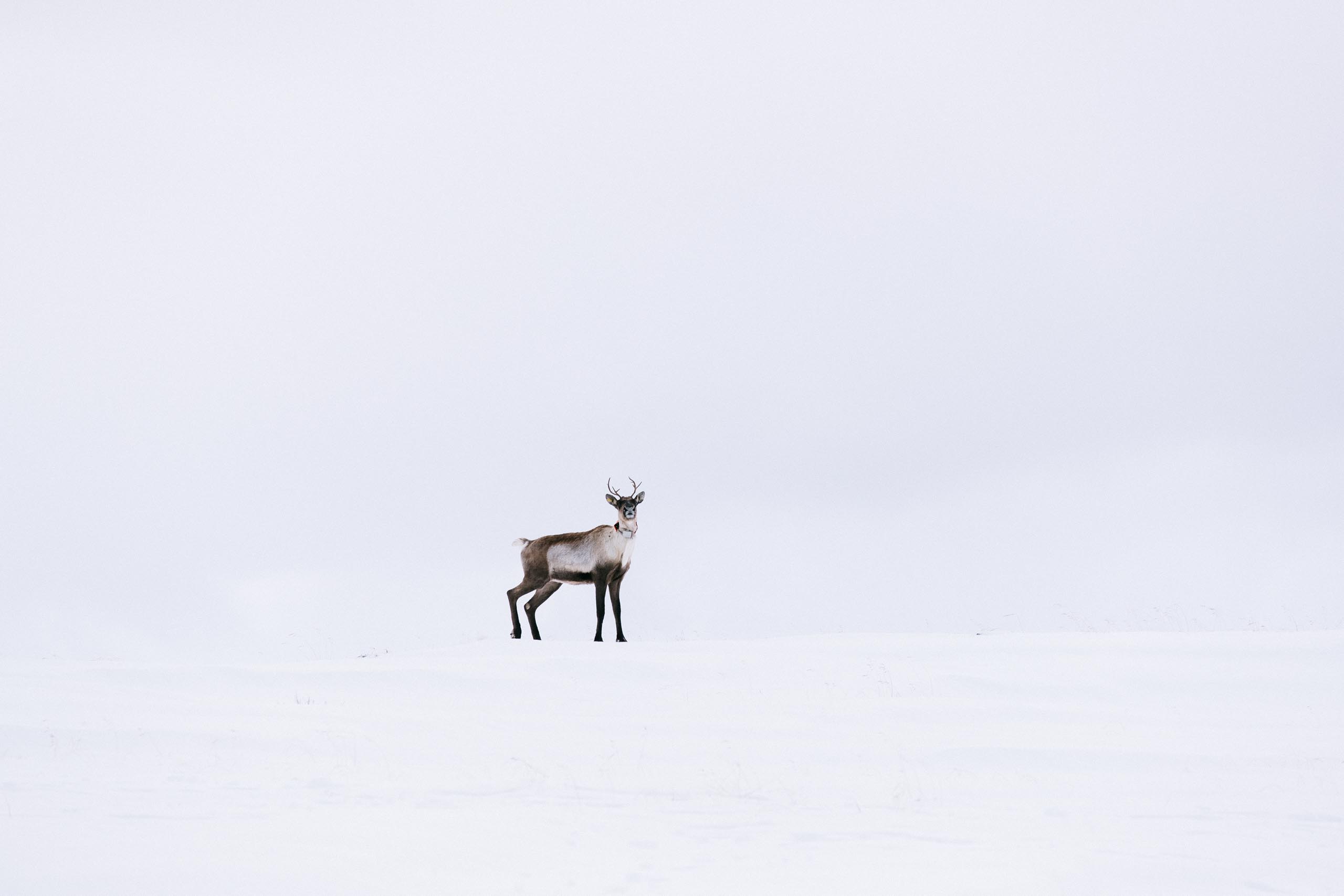
The federal government ‘sees a long-term future for the oilsands.’ Here’s what you need to know
An internal document obtained by The Narwhal shows how the natural resources minister was briefed...
As B.C.’s landscapes are fragmented by industrial activities and the province faces biodiversity collapse, with more than 2,000 species at risk of extinction, guide outfitters, hunters, fishers and trappers are standing shoulder-to-shoulder with naturalists, ecotourism operators and conservation organizations in a new coalition calling on the province to protect B.C.’s ecosystems before it’s too late.
The Fish, Wildlife and Habitat Coalition launched in May with the hope that the diversity of its members will force the province to listen and take action. The unlikely alliance includes 25 organizations, representing around 275,000 British Columbians and over 900 businesses — and new members continue to join the ranks.
“Within the coalition, there’s a recognition or consensus that we’re losing these values in British Columbia,” Jesse Zeman, director of fish and wildlife restoration at the B.C. Wildlife Federation, told The Narwhal in an interview. “We’re at a fork in the trail: one [path] is the status quo, which will ensure that we end up with more ecosystems and fish and wildlife populations that move towards endangered, extirpated and extinction, and the other is where we jointly advocate…to drive positive change for those values.”
Tim Burkhart, of the Yellowstone to Yukon Conservation Initiative, said he’s not surprised so many groups and organizations have signed on.
“I think what we’ve seen is that stakeholders from across all sorts of different sectors are losing or have completely lost faith with the province,” he said in an interview, noting the province’s failure to act on its promise to implement the recommendations of the 2020 Old-Growth Strategic Review as a timely example. One of the key recommendations said the province should immediately defer logging old-growth in ecosystems facing irreversible biodiversity loss.
“They’ve had plenty of time and there has been no meaningful change to the status quo of destroying old-growth, no deferrals, and it’s just not acceptable anymore.”
The ongoing conflict at Caycuse and Fairy Creek on Vancouver Island, where more than 100 protestors have been arrested while trying to prevent logging of old-growth forest, is indicative of how provincial policies put ecosystem values at odds with economic interests.
“You’d think that we should be taking care of fish, wildlife and habitat first, and operating industry and resource extraction within those constraints — but we’re not,” Zeman said.
The Narwhal requested an interview with Premier John Horgan but did not receive a response prior to publication.
Scott Ellis, executive director of the Guide Outfitters Association of B.C., said it wasn’t easy to convince his membership and board of directors to join forces with organizations that are anti-hunting. He told The Narwhal in an interview he was surprised to discover how many issues the groups agreed on.
“It probably sounds corny but it warms my heart a little bit that we have so much alignment,” he said. “If we can come together as unlikely allies, I think government should be like, ‘Holy shit, we need to pay attention.’ ”
He said he first started bridging the divide during roundtable discussions with the former Minister of Forests, Lands, Natural Resource Operations and Rural Development, Doug Donaldson, senior provincial staff and organizations like Raincoast Conservation Foundation and West Coast Environmental Law.
“I didn’t see a bunch of pottery-making, marijuana-growing, tie-dye-wearing, dreadlocked freaks and hopefully they didn’t see a bunch of trophy-hunting, beer-drinking knuckle draggers,” he said. “We align on almost every concern about our water, our forest, our harvest rates, about climate change concerns, our fish populations [and] our wildlife populations.”

Ellis credited Zeman for keeping the conversation going and setting up a framework to ensure members agree to put aside their differences and focus on those alignments.
“All of these groups and interests care about the sustainability of fish, wildlife and habitat,” Zeman said. “We can fight over what’s out there, and what we know is in decline, or we can work together to ensure the sustainability of those things that we care about.”
Katherine MacRae, executive director of the Commercial Bear Viewing Association of B.C., told The Narwhal she has worked with the Guide Outfitters Association on other initiatives and is hopeful this coalition will have a positive impact.
“We never speak about wildlife management or bear viewing or grizzly bear hunting or anything like that — we leave that at the door,” she said in an interview. “Ultimately, it’s habitat management in British Columbia that is failing right now and if we can join forces to make the voice stronger, then we want to be a part of it.”
Burkhart described the alliance as “unlikely bedfellows” and said he believes the coalition has great potential.
“There might be challenges and challenging conversations but by focusing on what unites us, I think it’s a really empowering step to take.”
The coalition is asking the province to prioritize fish, wildlife and habitat through legislation and regulation and commit to using independent science to inform its decisions. It is also advocating for increased funding for protection and a new governance model to support restoration and conservation efforts, all in partnership with First Nations.
Zeman said it’s vital that the province first establish a clear vision for what protection looks like, and then back that vision up with appropriate regulatory tools.
“We need to have a goal for what we want B.C. to look like 50 years down the road,” he said. “We know what it looks like without a goal, because we have no salmon in the Fraser River, endangered steelhead [and] endangered caribou. We cannot continue to repeat those same mistakes.”

Burkhart said B.C. has many opportunities to live up to its promises, such as enacting provincial species-at-risk legislation which it committed to doing after the 2017 election, but agreed that landscape-level solutions have to start with the big-picture vision.
“There are many ways in which [the province] can take action right now,” he said. “We want to see that vision articulated and put into action, and we’re going to be there to hold them to account. We don’t need campaign commitments — we need action on the ground.”
He added that the province has an opportunity to show the world a better way of balancing industry and conservation.
“With our incredible biodiversity and incredible natural values, B.C. should be a global leader in conservation,” he said. “Instead, we’re falling way behind as species wink out and different caribou herds go extinct and more and more habitat is lost across the province with zero vision for what fish, wildlife and habitat could look like in British Columbia.”
While the coalition is focused on pushing the province to create that big-picture vision, it is also looking at leveraging amendments to existing legislation, such as the Forest and Range Practices Act.
“When we talk about the forestry industry, a big industry that employs lots of British Columbians [and] brings a lot of economic value to this province, we’re not asking for it to stop,” MacRae said. “We’re asking for different value guidelines to be added into the forestry act.”
She explains that the value of tourism, for example, is not considered in any forestry-related decisions, adding that adventure tourism alone is a $3.2 billion industry.
“At what point are we going to look and say that there are other values in this province that need to be considered?”
Ellis agreed and said he believes the forest industry can coexist with habitat protection, but warned there will be more conflicts unless the province acts quickly to implement significant change.
“Let’s do a better job. Let’s deactivate some roads, let’s plant some deciduous [trees], let’s have a kind of mosaic of tree species out there.”
He added he’s been unsuccessfully advocating for change in how the province manages B.C.’s forests for over a decade.
“Government doesn’t care, doesn’t listen,” he said. “Or if they listen, they just blow it off. And it is regardless of government — green, orange or red, we’ve talked to them all.”
The Ministry of Forests, Lands, Natural Resource Operations and Rural Development declined requests for an interview and the Ministry of Environment and Climate Change Strategy was unable to provide an interview prior to publication.
Zeman said the members of the coalition are coordinating how best to work together and to ensure growth is sustainable. The next step is to start actively engaging with the province, and later the federal government as well.
“We would like to see legislated objectives and outcomes tied to fish, wildlife and habitat,” he said. “Because we know that if we don’t have those, we won’t have any fish, wildlife and habitat.”
If B.C. continues to lose species and its landscapes are increasingly fractured, Burkhart said there will be far-reaching impacts, not only in the natural world but also to the province’s cultural identity.
“The tourism slogans, ‘Beautiful British Columbia’ and ‘Super, Natural B.C.’ aren’t going to hold up for long if we keep seeing all the habitat disappear, and more and more species on the brink.”
Get the inside scoop on The Narwhal’s environment and climate reporting by signing up for our free newsletter. On March 17, federal Conservative Leader Pierre Poilievre...
Continue reading
An internal document obtained by The Narwhal shows how the natural resources minister was briefed...

Notes made by regulator officers during thousands of inspections that were marked in compliance with...

Racing against time, dwindling habitat and warming waters, scientists are trying to give this little-known...
